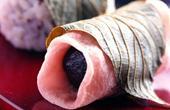Vitamins of group B

Vitamin B1( thiamin)
Contained in many products of plant and animal origin, but most of all thiamine in yeast, wholemeal bread, legumes, kidneys, liver, brain slaughter animals, beef, lamb and egg yolk. The lack of vitamin B1 in the diet is manifested mainly in those or other violations of the functions of the muscles and nervous system. In a day an adult healthy person needs to consume from 1.5 to 2, 0 mg of vitamin B1.
Vitamin B2( riboflavin)
Most of it is found in meat, liver, milk, cheese, cottage cheese and chicken egg. There is a lot of riboflavin in the embryo and shells of wheat, rye, oats. Insufficiency( hypoavitaminosis) of vitamin B2 leads to headaches, decreased appetite, fatigue;in more severe cases, it manifests itself in undesirable changes in the conjunctiva of the eyes, skin and nervous system. The daily requirement of an adult healthy person in riboflavin, depending on the age and nature of work activity, is determined in 2.0-2.5 mg.
Vitamin PP( niacin)
The lack of this vitamin in food is the cause of skin, gastrointestinal and nervous system diseases.
Niacin, or, as it is sometimes called, nicotinic acid, participates in the formation of red blood cell hemoglobin. The most accessible sources of niacin are bread from wholemeal flour, cereals, liver, heart, kidneys, meat of slaughter cattle, legumes, fish. Especially it is much in beer and baker's yeast and in dried white mushrooms. Usually the daily diet of an adult healthy person should contain from 15 to 25 mg of vitamin PP.
Vitamin B6( pyridoxine)
Hypovitaminosis B6 and the more avitaminosis B6 is a rather rare phenomenon. It comes with prolonged absence in the diet of milk and dairy products, especially in people suffering from chronic diseases of the gastrointestinal tract. Most often with hypovitaminosis B6, nausea appears, appetite decreases, excitability increases and skin disease such as dry seborrheic dermatitis occurs. The main sources of pyridoxine - milk, cottage cheese, cheese, buckwheat and oatmeal, meat and offal, chicken egg, fish, bread from wholemeal flour. Depending on the age and occupation, an adult and a healthy person should receive 2.0-3.0 mg of pyridoxine daily.
Vitamin B12( cyanocobalamin)
In the human body takes part in many metabolic reactions. At its lack in a diet the serious form of an anemia can develop - pernicious anemia. The optimum daily requirement of an adult in vitamin B12 is 0.002 mg, and that of a pregnant woman 0.003 mg, which is quite compensated by the presence in the diet of milk, cottage cheese, cheese, meat, liver, slaughter and some fish.
Vitamin P( rutin, citrine)
Together with ascorbic acid, it participates in the most important oxidation-reduction processes for the human body. Hypovitaminosis P is the cause of an extremely undesirable increase in the permeability of blood vessels. The natural need for a routine( 25 mg) is fully replenished by the presence in the diet of tea, citrus, broth of dried dog-rose. A lot of it also in rowan, walnuts, black currant.
Vitamin H( biotin), folacin, or folic acid, vitamin B15( pangamic acid), pantothenic and para-aminobenzoic acid are also included in this group of water-soluble vitamins. As a rule, the need for these vitamins is supplemented by the usual rational nutrition.
